Carved into the cliffs of the ‘El Tajo’ gorge is a surprising mine and fortress that dates back to the Moorish era. This was when constant wars in Al-Andalus required the city governors to protect the water supplies for the defenders of the city.
Ronda’s Water Mine under the Casa del Rey Moro was built during the reign of Ronda’s King Abomelic at the beginning of the 14th century. Ronda, at this time, was an independent Islamic kingdom on the frontline between the Christian north, and the newly developing Islamic Nazari Kingdom in Granada.
The VoiceMap GPS Audio Guide for Ronda
Ronda’s remarkable Water Mine, found beneath the Casa del Rey Moro (House of the Moorish King), is one of the most captivating landmarks featured in the VoiceMap GPS Audio Guide for Ronda. This immersive walking tour leads you through the city’s winding streets and dramatic landscapes while uncovering stories from Ronda’s fascinating past.
The Visit
Entry to the Casa del Rey Moro (House of the Moorish King) costs 10 euros per person and includes access to an audio guide that brings the site’s history to life. As you move through the rooms and terraces, the narration explains the architectural details, legends, and events that shaped this remarkable residence.
Before descending to the Water Mine, visitors pass through the terraced gardens of the Casa del Rey Moro — a peaceful oasis overlooking the dramatic El Tajo Gorge. These gardens were redesigned in the early 20th century by the renowned French landscape architect Jean Claude Nicolas Forestier, who also planned the gardens of the Parque de María Luisa in Seville and parts of the Bois de Boulogne in Paris.
Forestier’s design blends Andalusian and Moorish influences, featuring geometric layouts, tiled walkways, fountains, and carefully arranged hedges that frame breathtaking views of the surrounding countryside. The terraces descend in stages toward the gorge, creating a seamless connection between architecture, landscape, and history.
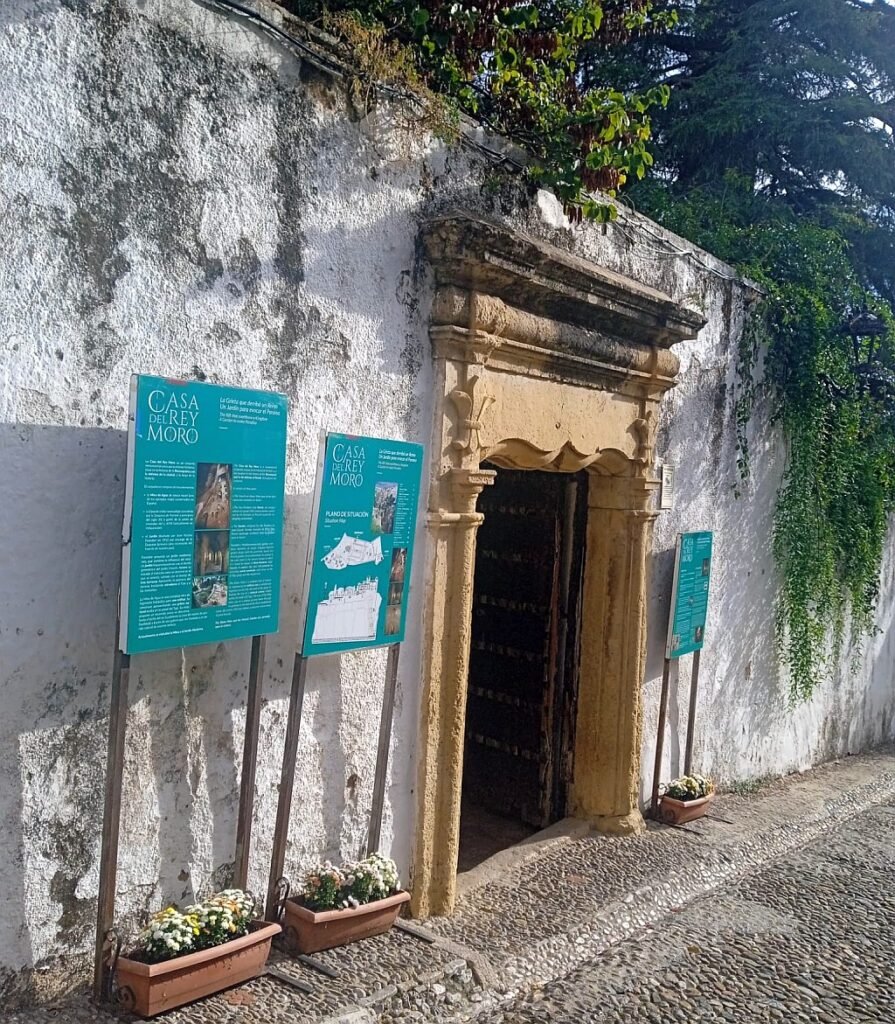
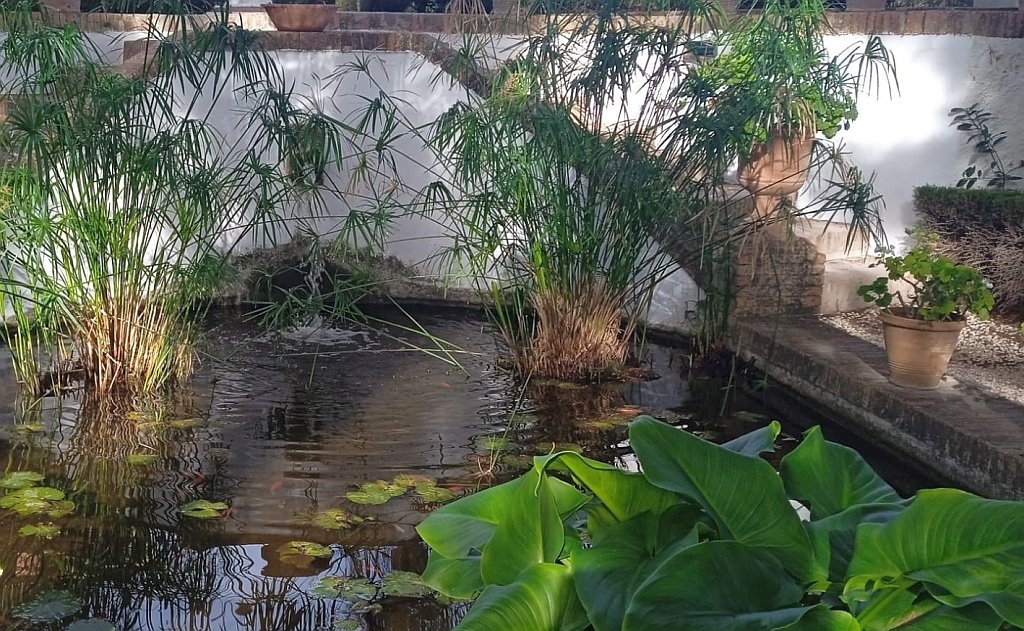
The Casa del Rey Moro as Seen from the Balconies of Hotel Don Miguel in Ronda
From the balconies of Hotel Don Miguel, guests are treated to a breathtaking view of the Casa del Rey Moro — the House of the Moorish King — one of Ronda’s most striking historic landmarks. Perched dramatically on the edge of the El Tajo Gorge, the mansion’s stone façade and terraced gardens seem to blend seamlessly with the surrounding cliffs, offering a vivid glimpse into Ronda’s Moorish past.

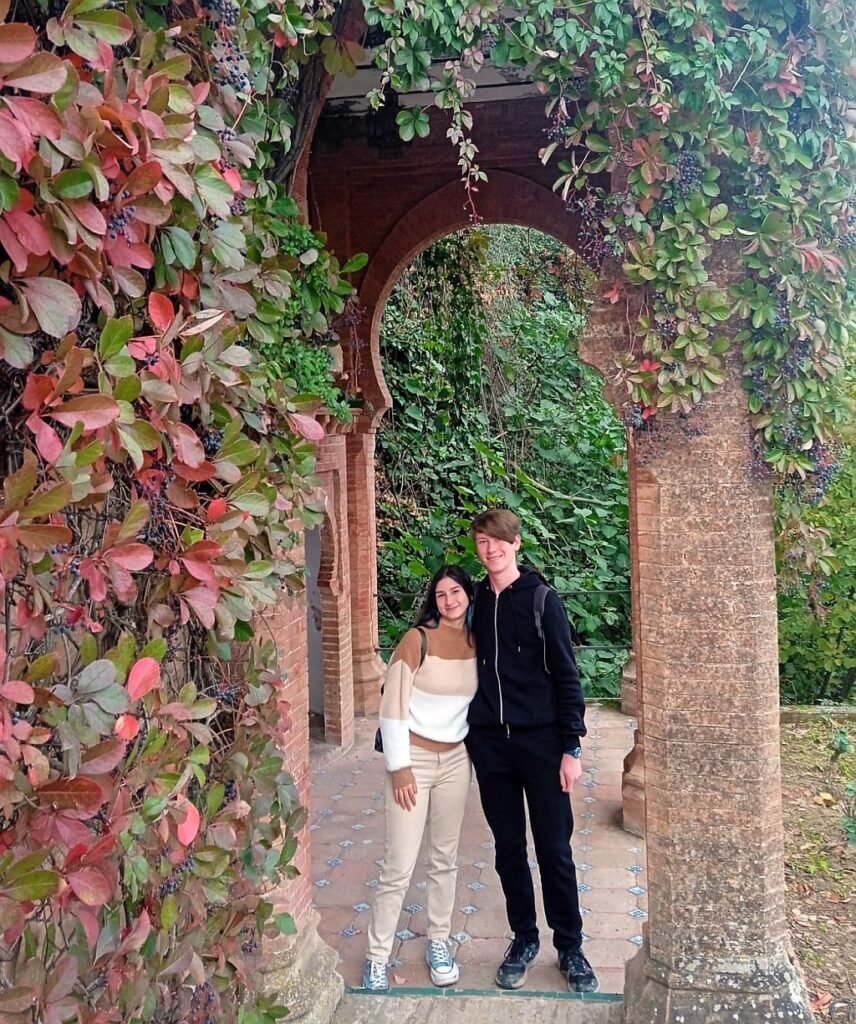
Buried treasure!
In popular culture, the mine is rumoured to be the secret hiding place of Abomelic’s gold, and many people in Ronda still believe that underground chambers and treasure may still be discovered. This is unlikely however, and many of the rumours could have been started by slaves freed after the city fell to the Catholic monarchs Ferdinand and Isabella in 1485.
Medieval Islamic engineering
The fortress is a marvel of medieval Islamic engineering, and quite unique in all of Spain. The chambers were built using a complex latticework of stacked vaults that made it possible to defend the lowest chamber and the entrance from chambers higher up the fortress.

Within the mine there are 231 steps carved into the rock that lead to the river below, a total distance of 60 metres, and the bottom 30 metres contain an impregnable fortress from which the city defence could protect essential water supplies.
At one time it wasn’t necessary to leave the fortress to collect water, a water wheel with buckets was used to bring water from a well in the room of the spring (‘Sala del Manantial’), and then slaves would form a human chain to pass water in skin bags called “zagues” from the bottom to the city above.
Secret Escape Route Out of the City
The fortress at the bottom of the water mine was also thought to be a secret escape from the city because the location of the fortress cannot be seen from the Arab Bridge which was the main entrance to the city. However, to make sure the city was defended, the weapons room included a small window above the door, that could be used to pour boiling water onto attackers.
Another interesting aspect of the fortress is that the stone walls prevent sound traveling, and in the room of secrets it is said that if a person stands in the centre of the room, he cannot hear what is said in the corner.
Directly above the fortress, about 25 metres above the river, there is a terrace known as the Terrace of the Conquest, from which Moorish and then Christian conquerers could watch the river for signs of attack, and this is now known to have been the first line of defence of the water mine. It is below the hermit’s grotto, and is so well hidden it cannot be seen from any direction.
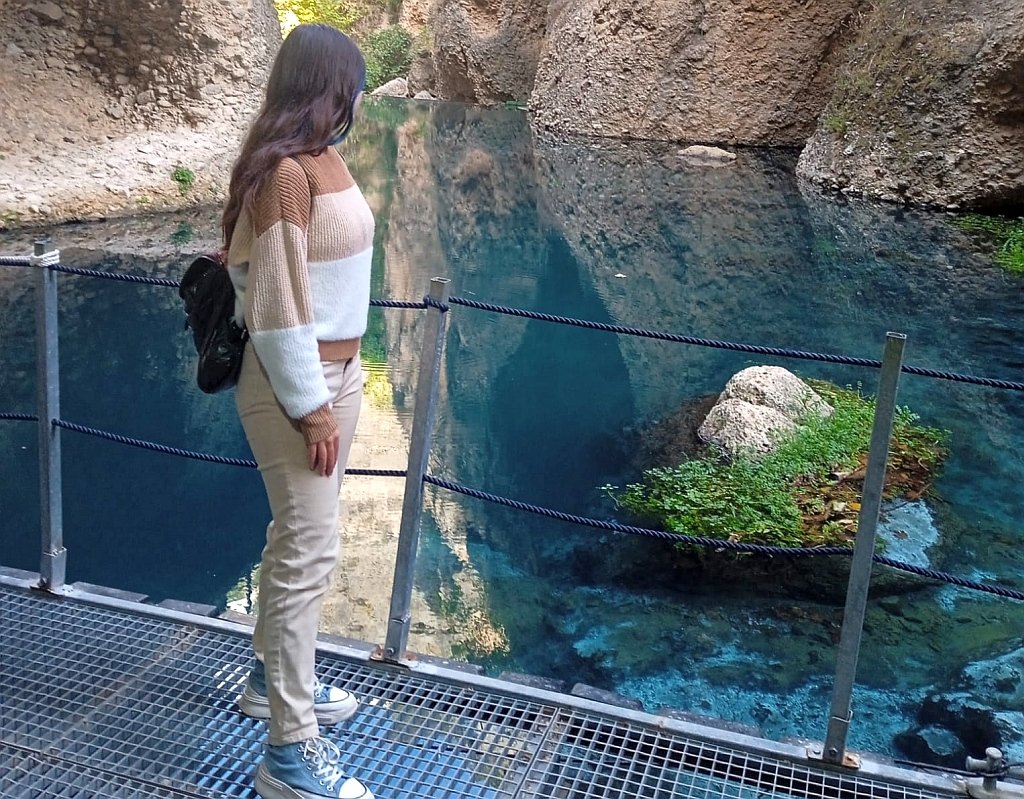
Opening hours and contact details for Ronda’s Water Mine under the Casa del Rey Moro
You can buy your entry tickets online in advance on the website or at the entrance gate.
- Winter (October-April):
- From 10am to 8pm
- Summer (May-September):
- From 10am to 9:30pm
- Entry Price 10 Euros per person
- Telephone: +34 617 61 08 08
- Website: https://casadelreymoro.org/en/home/
- Address: La Casa del Rey Moro, Calle Cuesta de Santo Domingo, 9 29400 Ronda Málaga Spain
Tours and activitites in Ronda from Get Your Guide
FAQ – Ronda’s Secret Water Mine (Casa del Rey Moro)
Ronda’s Water Mine (La Mina de Agua) is a subterranean Moorish-era water supply system and fortress carved directly into the Tajo Gorge cliffs. Built in the early 14th century, it safeguarded the city’s access to water during sieges and doubles as a hidden refuge offering rich insight into medieval defensive engineering.
Constructed under the reign of King Abomelic (a Merinid monarch) circa the early 1300s, the mine was part of Ronda’s fortifications when it served as a border fortress between Moorish Granada and Castile.
Visitors descend 231 hewn steps over a 60-metre shaft to reach river level. Water was then drawn via a noria (waterwheel) powered by human effort and carried up in leather bags by slaves in a human chain.
Within the mine are fortified chambers—including a weapons room and a “Hall of Secrets” with sound-altering acoustics. Narrow windows allowed defenders to hurl boiling liquids on attackers. It was also rumored to serve as a secret escape route.
The Hall of Secrets is a domed chamber noted for its unique acoustics—whispered speech travels distinctly between corners while seeming inaudible elsewhere.
During the 1485 siege by the Marquis of Cádiz, Christian forces captured the water mine and disabled its noria. Losing access to water, the city surrendered within days.
Visitors begin by entering the Casa del Rey Moro gardens, then descend into the mine. The site is open daily, with summer hours extended until 9:30pm and an entry fee of €10
Yes—it’s featured in the VoiceMap GPS Audio Guide for Ronda and there is also an on-site guide available when you buy your entry ticket.
The mine is one of the finest-preserved examples of medieval Islamic hydraulic engineering in Spain. It includes vaulted chambers, multiple defensive levels, and a water-lifting mechanism—all hewn straight from the rock.
Nearby attractions in Ronda include the Puente Nuevo bridge, the Real Maestranza bullring, Arab baths, local museums, and remarkable scenic walks. The city is compact and walkable, ideal for exploring at your own pace.
I’ve been living in this lovely area of Western Andalucia for the last 20 years or so and dedicate most of my time to the running of English language tourist information websites for the towns of Cádiz, Ronda, Grazalema, the famous or infamous Caminito del Rey, and also Wildside Holidays, which promotes sustainable and eco-friendly businesses running wildlife and walking holidays in Spain. My articles contain affiliate links that will help you reserve a hotel, bus, train or activity in the area. You don’t pay more, but by using them you do support this website. Thankyou!

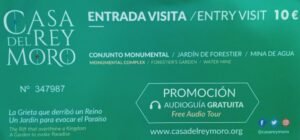
4 thoughts on “Ronda’s Water Mine under the Casa del Rey Moro”